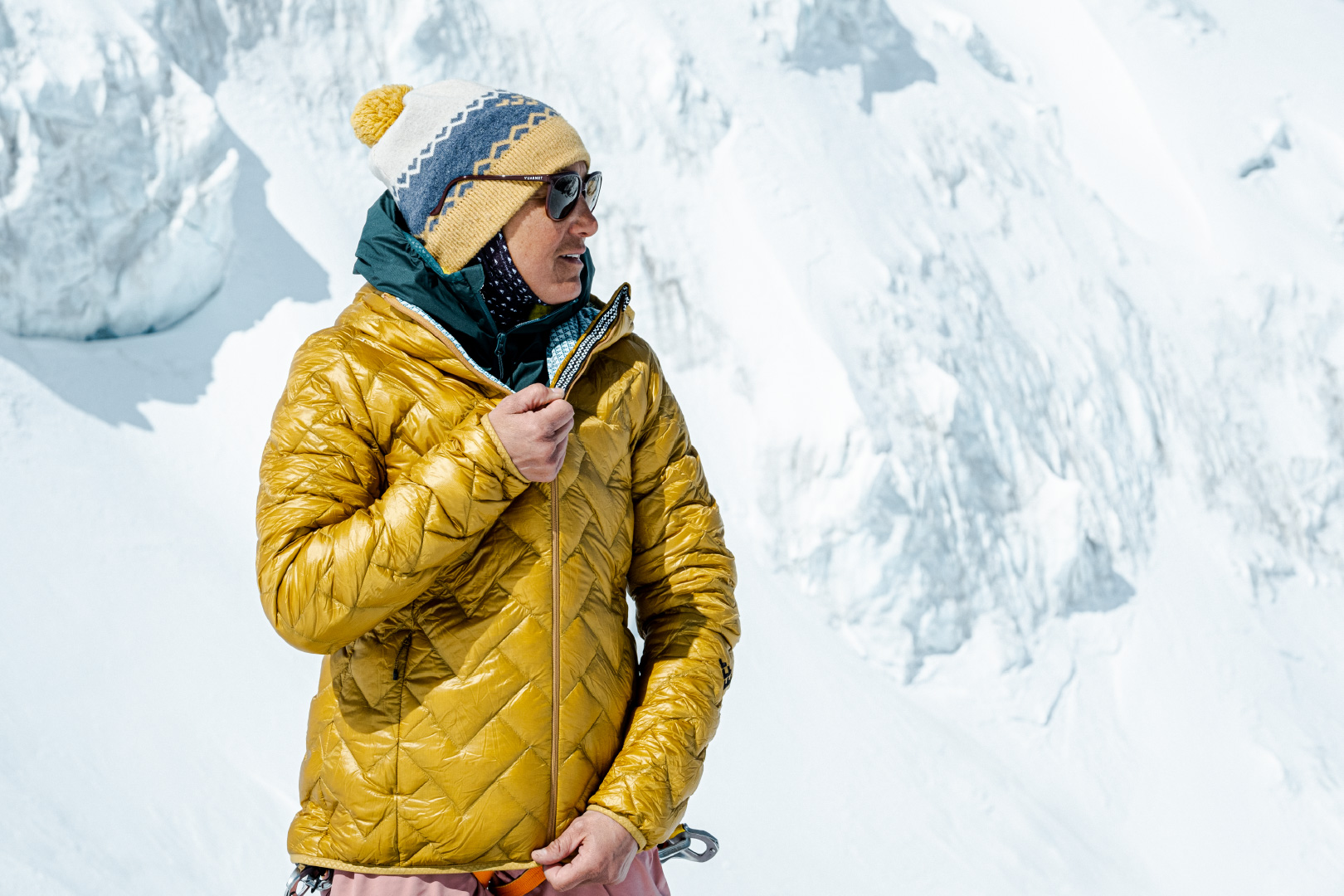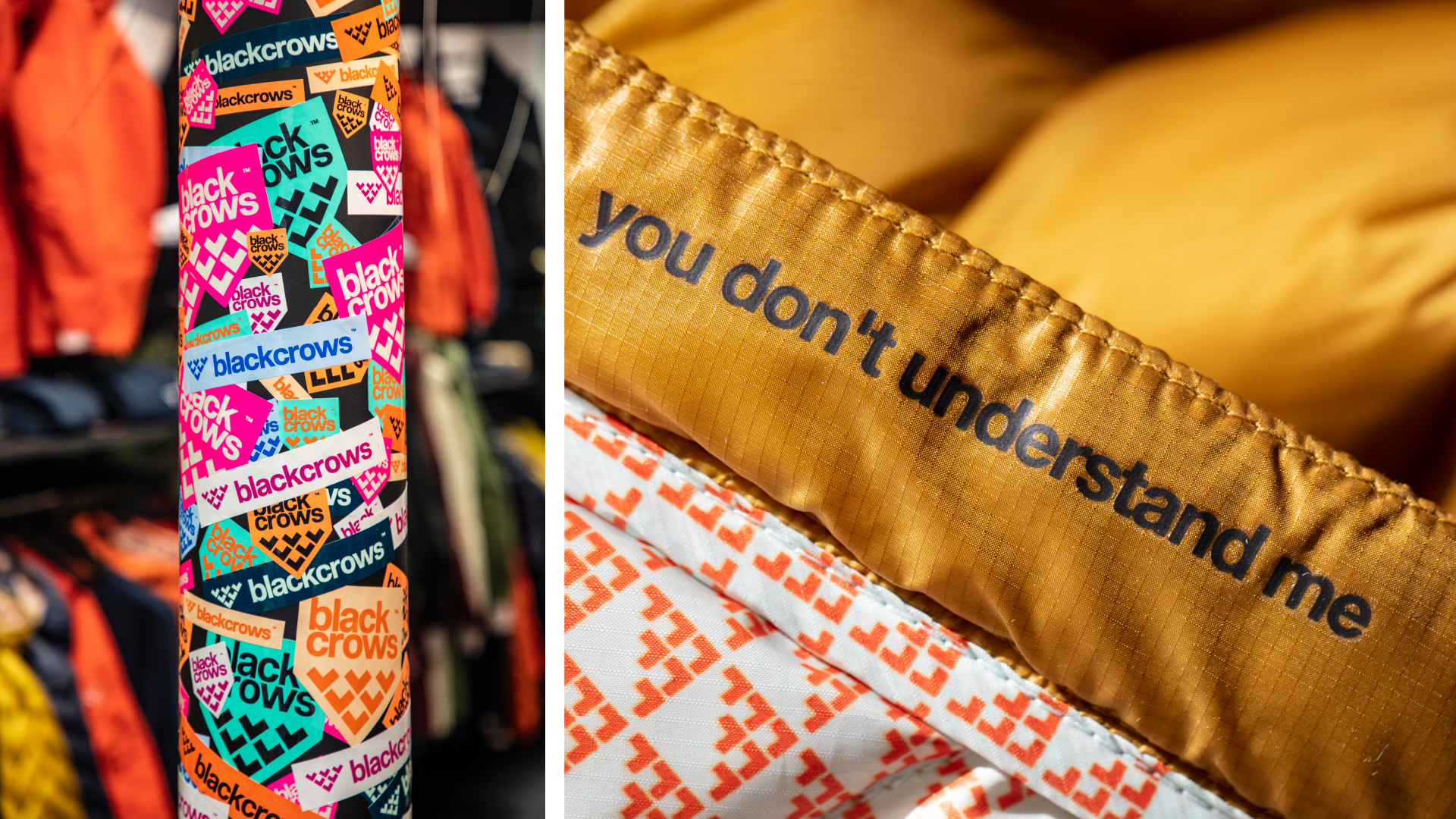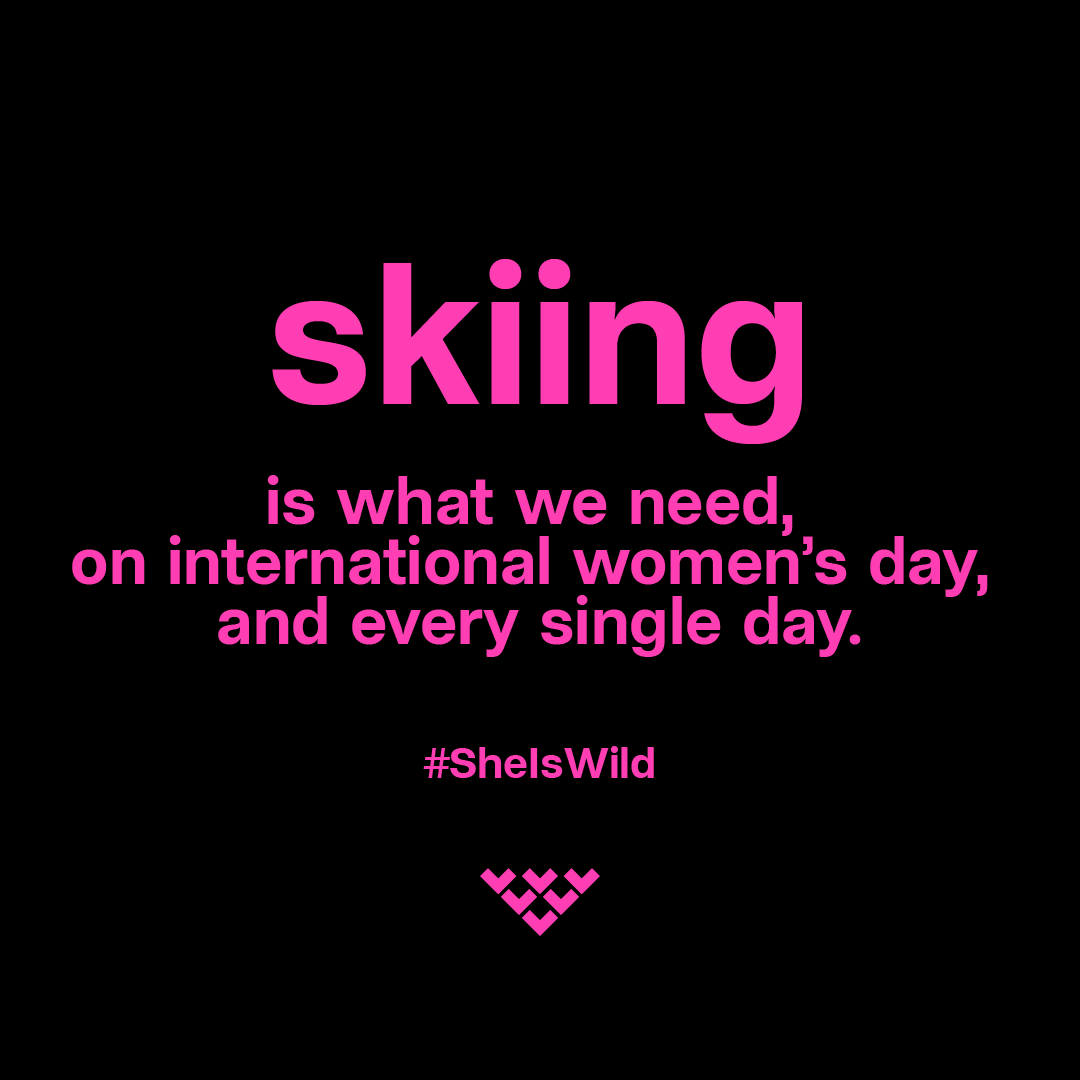The high-wire crow Liv Sansoz (the z is pronounced, not like in Avoriaz) has been helping to develop our latest technical clothing collection. The whole range has been reinvented this year, all rebuilt around choices on materials and supplies. For us, this is a revolution. For Liv who sees it from the inside, it’s a complex process with 4 main stages as she describes for us below through the lens of a serious skier.

photo @julienregnier
1. Outline: design brief and sourcing.
“What do we want to make? And how? You don’t engineer an Ora salopette destined for the big mountain in the same way as an inner-lined Ferus jacket aimed at resort and all-terrain skiing. For the collection this winter, there was a basic desire to produce and source materials in Europe. This approach counted out the normal membranes (manufactured in Asia) so we had to go and find alternative materials. This part took the longest out of the initial process because you have to source materials that work with the blackcrows aesthetic while providing a highly-important functional role.
The product team went to see many manufacturers and those shortlisted were invited to the blackcrows chalet in Chamonix. This is where I was able to meet them with their samples and listen to them talking about their products. In her office, Noémie (head of clothing product) has loads of folders with all the different fabrics, membranes, meshes and stretch materials etc. In the end 3 or 4 suppliers were kept on, including Polartec for insulation and BenQ for their Xpore membranes.
By the end of this step, we have a list of functional specifications, a technical document that has all the functions and characteristics for each product type. For example, we’d like a lift pass pocket (function) that will be a zipped pocket on the left arm (technical characteristics) or a breathable membrane (function) made from Xpore 20000/20000 (technical characteristics). This is how we get a complete, detailed idea of everything we want for the product and the materials to use.”
timing: 2-3 months
base camp 1: functional design brief

photo @lubaki.fr
2. Design: define the silhouette.
“We enter this stage in parallel with the first, it’s not entirely sequential. This is where Yorgo (blackcrows’ artistic director) and the team of stylists are particularly called into action (although their choices beforehand also have an effect on sourcing). We soon get access to really simple sketches that Noémie sends me to ask where to place the zips and pockets for example. We have to decide if we should make full or 2/3 length zippers and whether we’ll have gaiters on the pants, etc.
Yorgo, Camille and Christophe (founders of blackcrows) have regular input alongside the product team led by Noémie (who is really design-orientated) and Kenji (who is the head of global product at blackcrows with a real engineering perspective). That’s when you realise that blackcrows is really a family story, of “pals who make the brand”. There’s also Anthony Boronowski, the designer of this collection, who joins the video conferences from the US to bring his vision in tandem with Noémie.
We discuss things a lot together and at the end of this step we have the finalised designs and the templates to be sent to the factory.”
timing: 1-2 months.
base camp 2: finalised designs and patterns.

photo @julienregnier
3. Samples: initial field testing
“I received the first test products in November or December and spent my whole winter season with the Freebrid Xpore outfit that I’d just got hold of. I also received the Ferus fleece and the Freebrid Expe down jacket in January.
This is when I am really at the core of my work for the brand. I use the products every day in the mountains, I ride with them and make a ton of notes: “the fabric is good” or “too delicate” or “takes on water”. Finding out whether the new membrane breathes well takes a bit longer because in the middle of winter it’s really cold so it’s only later on in the season that I can really test if it works or not in warmer conditions. Because I had a problem with a membrane, Noémie had a jacket sewn at Green Wolf in Servoz, a really simple product with just one front zip, without elastic on the sleeves even, to really make a full-scale, controlled material test. This allowed me to confirm what I had felt, the membrane breathed better in this configuration and was more silent. We were then able to determine that it was the liner responsible for the issues.

photo @fabian_bodet
On the down jackets, there were seams that weren’t right, an inside pocket pleat to change, 1cm to add onto the bottom of a trouser leg so that it easily goes over a ski boot, all these little details that you only notice by wearing the clothes in real conditions, by taking them skiing and into the mountains as much as possible.
We also had some days dedicated to patterns with two external consultants who came up from Annecy to the chalet specifically to check on everything that needed changing. Two models put the outfits on and were given a once-over. Everything was taken down and noted, the pleats, the feeling, etc.
But the most interesting thing for me is in practice, when you realise that the beacon pocket works well, easy to open, but that the side zip doesn’t work (we moved it under the arm) or that we forgot a slider on a zip.
The 2nd, more refined prototype arrives just before summer and this is the one we confirm production on really.”
timing : 5-6 months.
base camp 3: Sample finalised, ready for production.

photos @fabian_bodet
4. Production :
“This stage is carried out in summer and I have no influence over it because it’s already off, not much else can be done as a skier except to wait. When we receive the products at the start of September there is excitement as well as a bit of stress, we check the logos are in the right place, that you can’t break the zip too easily but basically the die has been cast and if there’s a problem at this stage then it’s a whole line of product lost and insurance companies will be called in unless you can organise emergency production to get the products into shops by mid-October.”
timing: 2-3 months.
summit: outfits ready to send to shops.

photos @lubaki.fr
As a skier, my role is to assist in each stage of the process, I always have something to bring to the table. Above all I have to see the designers’ vision and incorporate my own technical expertise (on the placement of pockets for example). By using the products every day, I also get to know the different aspects of wear and tear as well as functionality. It’s actually quite easy to see what works or not.
To do this job well you have to be interested in the equipment and in what other brands are doing, that’s something I’ve always loved. For me it’s super interesting, when you do something all the time, you want to have things that work.
And now, it’ll soon be time to go skiing all winter in this collection and that’s the best kind of satisfaction! We have lift off!

photo @fabian_bodet
interview made by @mathieuros


